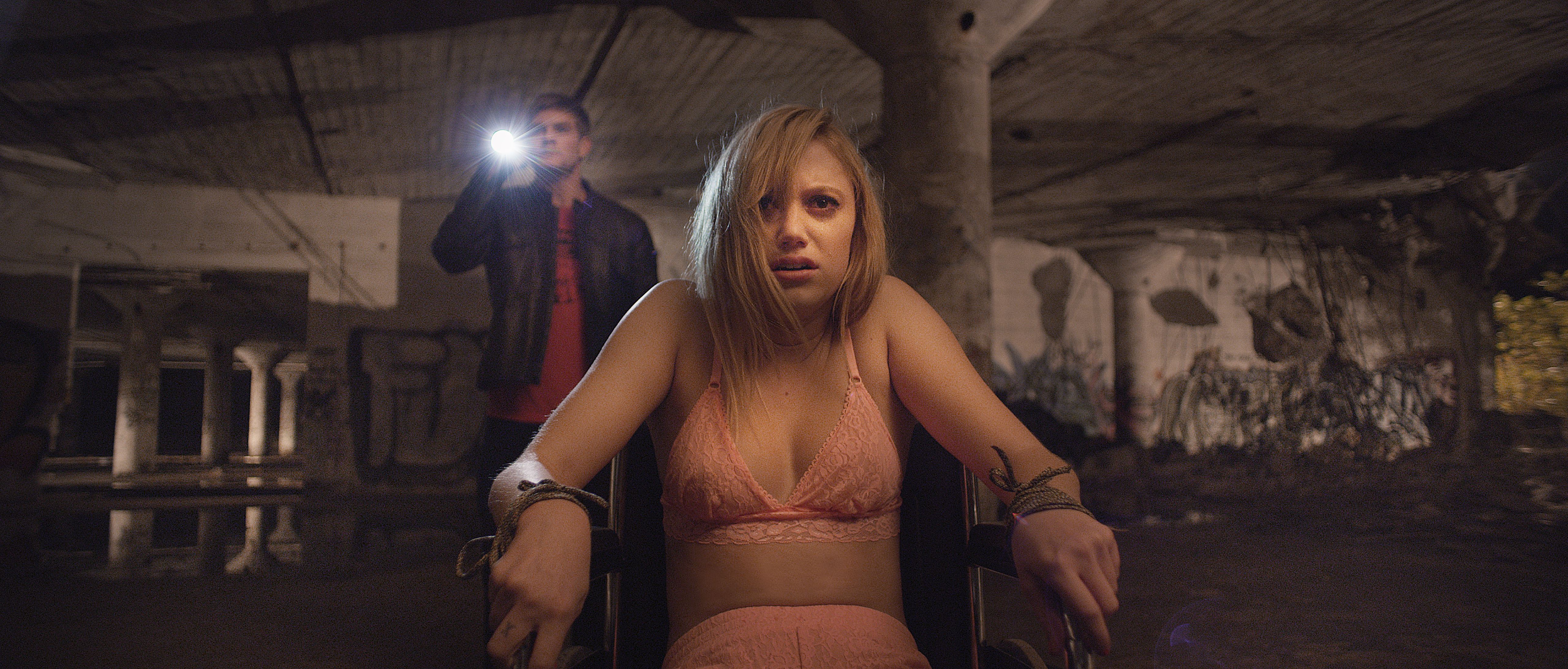Horror is often dismissed by “serious” filmgoers as a base genre, full of cliches and rarely engaging with the audience beyond making them jump. However, like with any film genre, a movie is only as low brow as its creators decide to make it. When a filmmaker wants to say more with their work, genre constraints are simply a small hurdle to overcome. In some cases, genre conventions can even be strengths, ways to further explore a particular topic. The latter is very much true in recent indie horror film It Follows, which uses an 80s horror framework to examine the subject of sexual promiscuity.
The look and feel of the movie places us right at home within this genre. Many scenes take place within a suburban neighborhood, not unlike slasher film classics like Halloween, while the synth-heavy score tells us exactly what to expect. The central premise too, regarding an entity that follows victims based on sexual activity, is taking the subtext of the slasher genre and making it text.
But unlike many of its inspirations, It Follows explores its themes of sexuality without being exploitative. None of the sex scenes are especially provocative or revealing; in fact, when there is nudity onscreen, it is used for discomfort rather than titillation. Sex itself becomes removed from its romantic and gratifying contexts and becomes purely utilitarian. People don’t make love in this movie, they pass on the entity to save themselves. “It” is like an otherworldly STD, or The Ring’s chain-letter demon Samara made sexual. The screenplay is clearly more interested in the repercussions of sex, both fictional and real, than punishing its characters for the same thing we ourselves are enjoying as spectators.
Beyond the intriguing and genre-reflexive concept, It Follows innovates within its relatively small budget. There are no fancy or original creature effects, but the film does not need it. “It” always appears as a person, walking slowly toward its victim. In theory, this would make it difficult to cause dread in the viewer, but writer/director David Robert Mitchell does something brilliant in almost always making the camera the focal-point of the creature.
Since Jay is the target throughout most of the movie and we are following her story, the camera is often a stand-in for her point of view when the entity is in sight. However, this isn’t always the case: even when Jay is elsewhere in a scene, the entity is often fixated solely on us, walking slowly but inevitably in our direction. Given how it is commonplace for actors to avoid looking at the camera, even when they are featured, this creates a very clear cinematic tell for the monster. We could be looking into an entire crowd of people and still be able to immediately pick out the monster. Eye contact is a powerful, and often eerie, thing.
I do not wish to say too much more about It Follows, as even the trailer diverged more information than I would have liked to have going in. It may not be the scariest horror film in recent memory, but it does an excellent job at setting a mood, and has far more on its mind than its peers.
